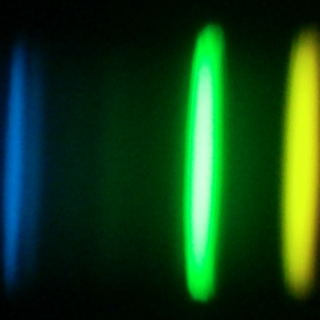Bibcode
Skúladóttir, Ása; Koutsouridou, Ioanna; Vanni, Irene; Amarsi, Anish M.; Lucchesi, Romain; Salvadori, Stefania; Aguado, David S.
Referencia bibliográfica
The Astrophysical Journal
Fecha de publicación:
6
2024
Revista
Número de citas
18
Número de citas referidas
13
Descripción
The first (Population III) stars formed only out of H and He and were likely more massive than present-day stars. Massive Population III stars in the range 140–260 M ⊙ are predicted to end their lives as pair-instability supernovae (PISNe), enriching the environment with a unique abundance pattern, with high ratios of odd to even elements. Recently, the most promising candidate for a pure descendant of a zero-metallicity massive PISN (260 M ⊙) was discovered by the LAMOST survey, the star J1010+2358. However, key elements to verify the high PISN contribution, C and Al, were missing from the analysis. To rectify this, we obtained and analyzed a high-resolution Very Large Telescope/UVES spectrum, correcting for 3D and/or non-local thermodynamic equilibrium effects. Our measurements of both C and Al give much higher values (∼1 dex) than expected from a 260 M ⊙ PISN. Furthermore, we find significant discrepancies with the previous analysis and therefore a much less pronounced odd–even pattern. Our results show that J1010+2358 cannot be a pure descendant of a 260 M ⊙ PISN. Instead, we find that the best-fit model consists of a 13 M ⊙ Population II core-collapse supernova combined with a Population III supernova. Alternative, less favored solutions ( ) include a 50% contribution from a 260 M ⊙ PISN or a 40% contribution from a Population III Type Ia supernova. Ultimately, J1010+2358 is certainly a unique star giving insights into the earliest chemical enrichment; however, this star is not a pure PISN descendant. * Based on observations made with the Very Large Telescope (VLT) of the ESO at the La Silla Paranal Observatory under the program ID 112.26WJ.001
Proyectos relacionados

Abundancias Químicas en Estrellas
La espectroscopía de estrellas nos permite determinar las propiedades y composiciones químicas de las mismas. A partir de esta información para estrellas de diferente edad en la Vía Láctea es posible reconstruir la evolución química de la Galaxia, así como el origen de los elementos más pesados que el boro, forjados principalmente en los interiores
Carlos
Allende Prieto